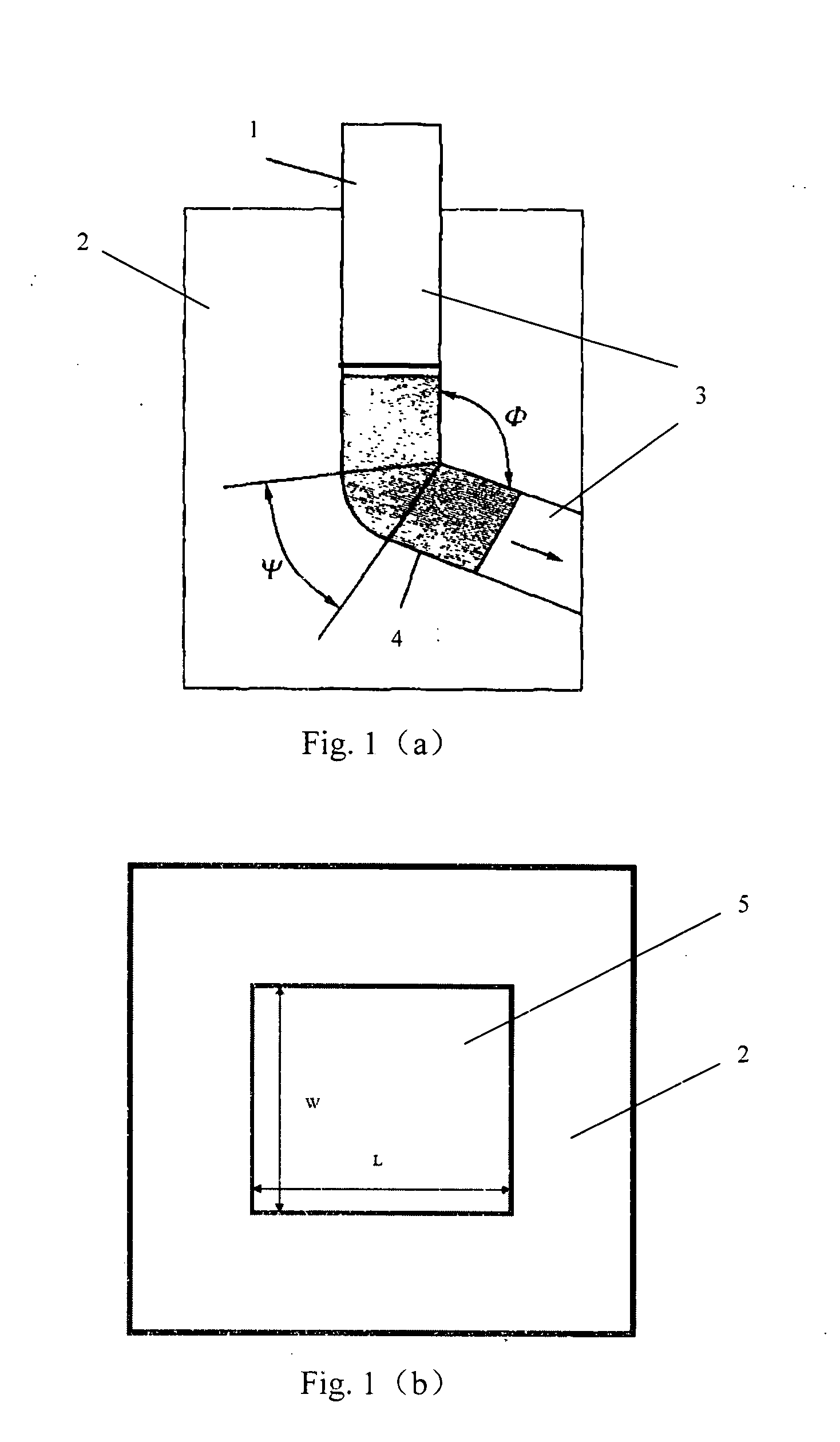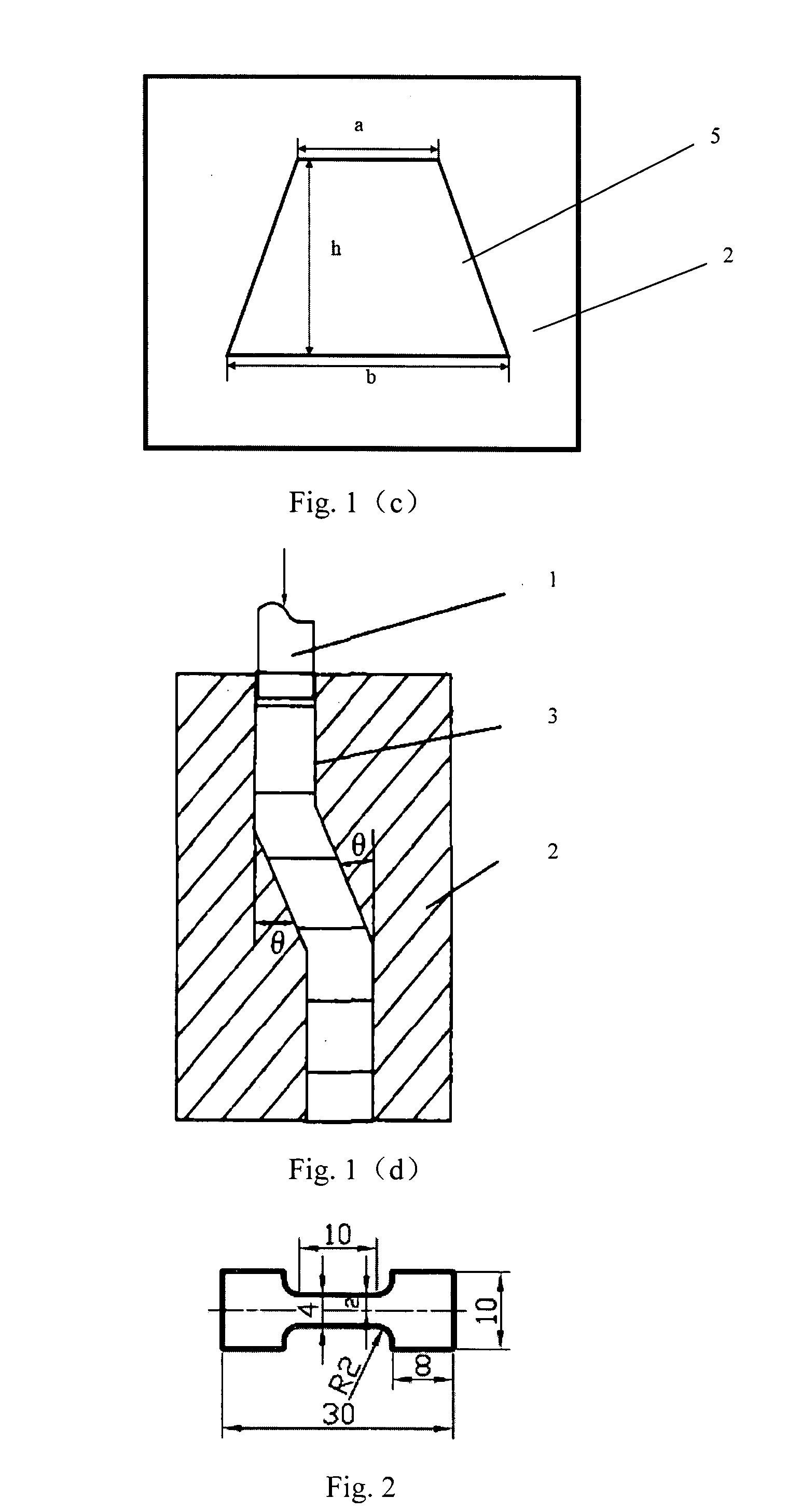Preparation method of laminated composite materials of different alloys
a technology of laminated composite materials and alloys, which is applied in the direction of extrusion control devices, manufacturing tools, chemistry apparatus and processes, etc., can solve the problems of difficult control of the size precision of the production, limited method of cladding, and complex devices, etc., to achieve low cost, simple and effective process, and high reliability
- Summary
- Abstract
- Description
- Claims
- Application Information
AI Technical Summary
Benefits of technology
Problems solved by technology
Method used
Image
Examples
example-1
[0044]Taking Example-1 alloy as an example, the ordinary operating processes of fabricating composite materials (pure Al / AZ31 alloy) are described in detail as follows:
□) The Compositions
[0045]
TABLE 1Alloys Composition (wt %)Element content (nominal wt. %)AlloyMgAlZnMnAZ31Bal. 310.3Al—100——
[0046]II) The Steps of the Composite Extrusion are Shown in Detail as Follows:
1) The AZ31 alloy and commercially pure aluminum plates are firstly pre-treated to remove greasing, then the materials are smoothed on the sand paper with water; subsequently, dryness treatment is performed for all the materials.
2) The ECAE die with the cross-section area of 12×12 mm and intersection of 90° is heated to 300° C., then, the pure Al / AZ31 alloy materials with different thickness arrangements in pairs or groups are paralleled placed into the die. The width and the height of the two materials are both 12 mm and 100 mm, respectively, and their total thickness is about 12 mm, and total height is about 100 mm. Th...
example-2
□) The Compositions
[0054]The differences between Example-2 and Example-1 mainly are as follows: two kinds of Mg alloys are used in Example-2, and the multi-pass extrusion is carried out to refine the grains of two alloys by ECAE die so as to preparation the superplastic composite materials.
TABLE 2Alloys Composition (wt %)Element content (nominal wt. %)AlloyMgZnYNdZrWE54Bal.—540.5ZW61Bal.61—0.5
[0055]II) The Steps of the Clad Extrusion are Shown in Detail as Follows:
[0056]1) The WE54 and ZW61 alloy plates are firstly pre-treated to remove greasing, then the materials are smoothed on the sand paper with water, subsequently, dryness treatment is performed for all the materials.
[0057]2) The ECAE die with the cross-section area of 12×12 mm and intersecting angle of 90° is heated to 300° C., then, the WE54 and ZW61 alloy materials pairs with the thicknesses both of 6 mm are paralleled placed into the die, i.e. their total thickness is about 12 mm. The width and the height of the two materi...
example-3
[0065]ZW61 / Cu composite material prepared in Example-3, the preparation method is similar to that of Example-1, and the main different between the two examples is as follow. ZW61 alloy and pure Cu are clad at 350° C.
[0066]The macrostructure of ZW61 / Cu composite (9 mm+3 mm) after ECAE near the joint interface is shown in FIG. 9; and the microstructure are presented in FIGS. 10a and 10b, respectively, where (a) unetching, (b) etching.
PUM
| Property | Measurement | Unit |
|---|---|---|
| Temperature | aaaaa | aaaaa |
| Temperature | aaaaa | aaaaa |
| Time | aaaaa | aaaaa |
Abstract
Description
Claims
Application Information
 Login to View More
Login to View More - R&D
- Intellectual Property
- Life Sciences
- Materials
- Tech Scout
- Unparalleled Data Quality
- Higher Quality Content
- 60% Fewer Hallucinations
Browse by: Latest US Patents, China's latest patents, Technical Efficacy Thesaurus, Application Domain, Technology Topic, Popular Technical Reports.
© 2025 PatSnap. All rights reserved.Legal|Privacy policy|Modern Slavery Act Transparency Statement|Sitemap|About US| Contact US: help@patsnap.com



